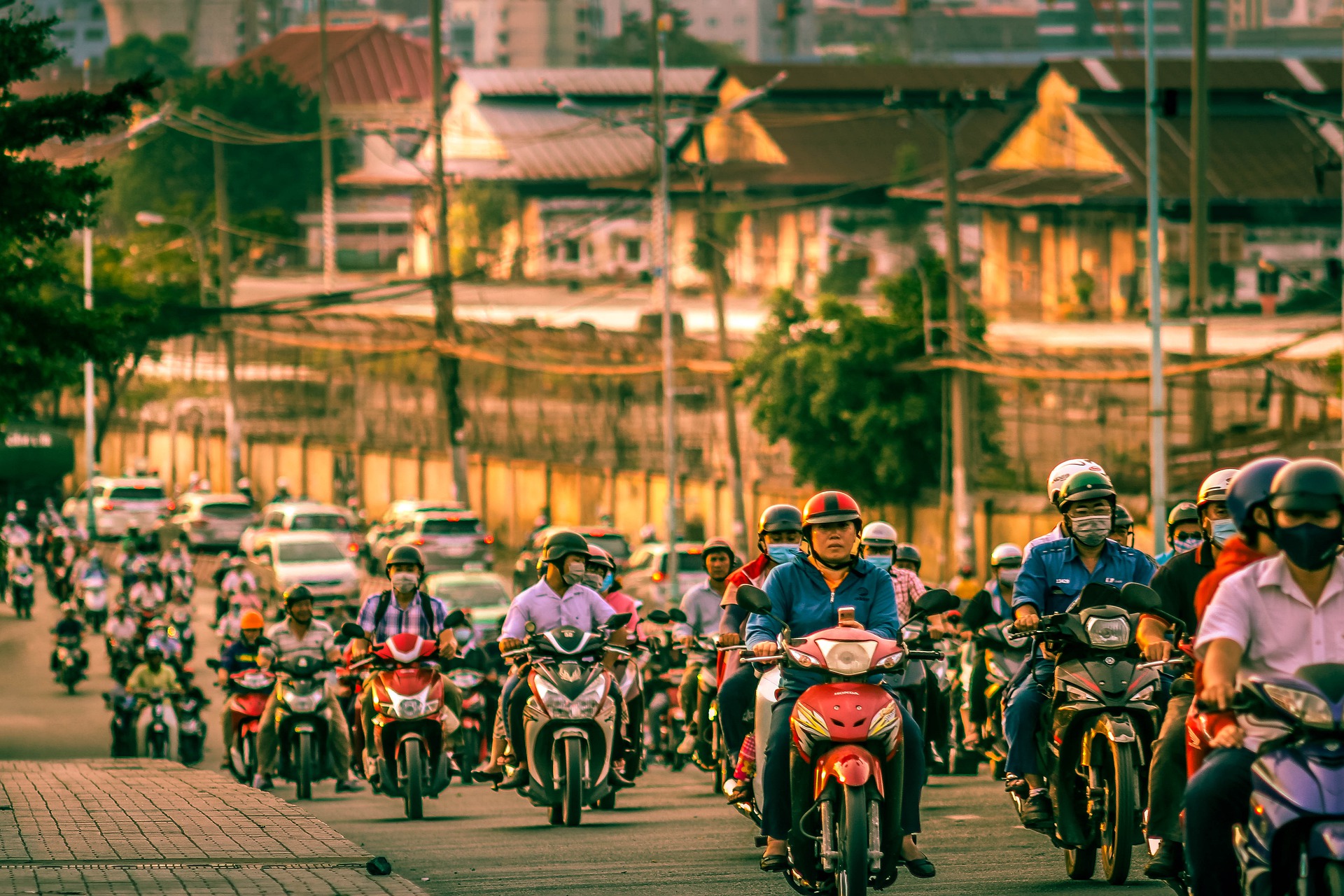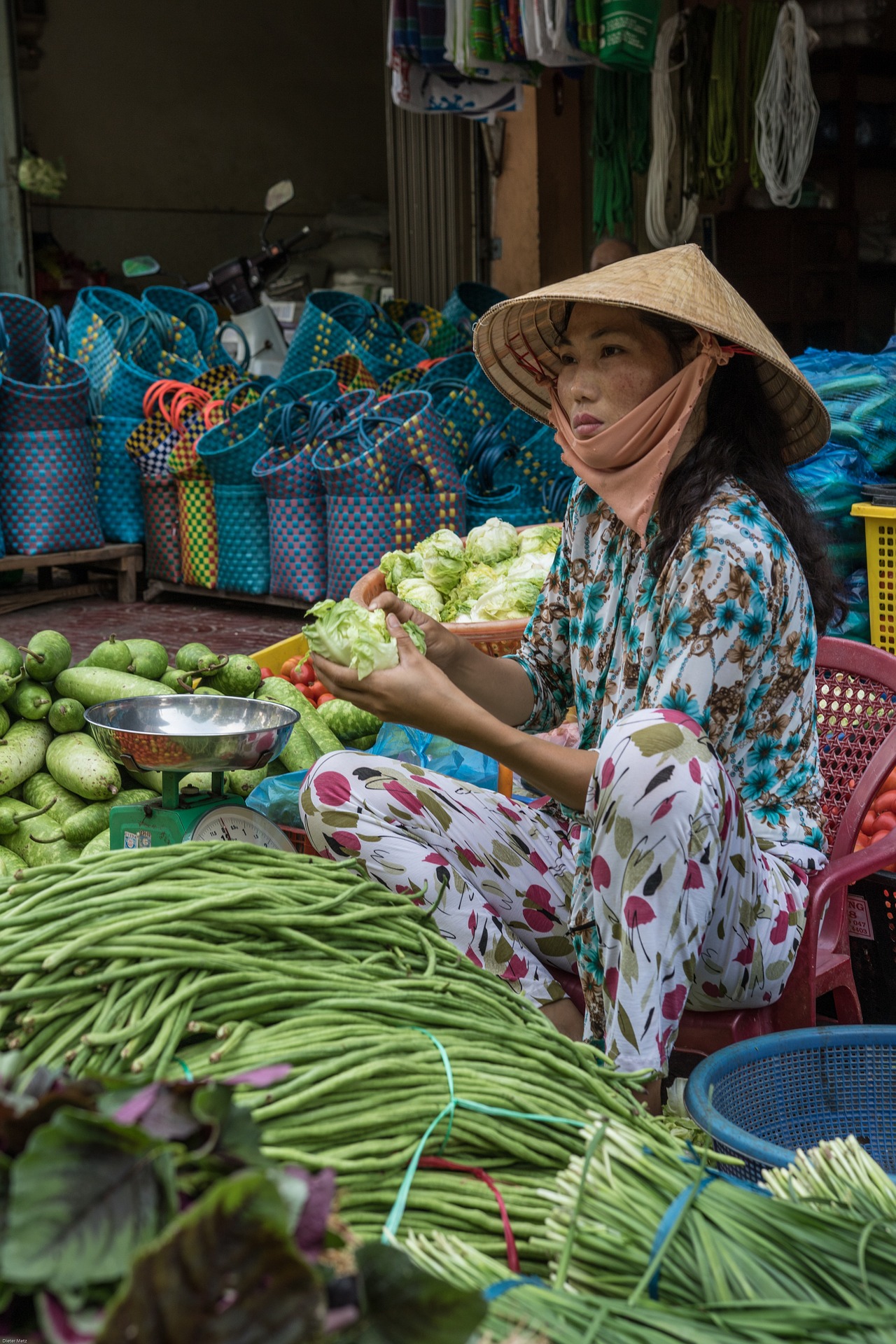
Let’s talk about dance in a way that’s not too technical and complicated. Getting people out there, moving to the music, shaking, jumping and rocking, is no small feat. Some teachers have the exceptional ability to do much more than instruct students to dance. These teachers possess an intangible something extra that inspires people to move like they have never moved before. A musical force of nature to behold, Trinh Le is that kind of teacher. A human dynamo! Wow! How does she do it?
Trinh’s actual movement comes first and foremost from the song itself. Hip hop and rhythm and blues, in particular, get her attention. If she likes the melody, then her body spontaneously marks the beat in rapid-fire steps. Drawing her inspiration from how catchy the tune is, she tends to choreograph her routines in more of a Hip hop style. She moves with the song’s native syncopated rhythm and goes with the flow. Pulsating with movement and totally in the moment, it’s all about how strongly she feels about the song. For sure, her movements meld together a fusion of Cumbia, Merengue, and Salsa, all of the classic ingredients of Zumba.
Trinh doesn’t define her actual dance style per se but emphasizes how she puts one hundred percent of herself into her movement. She says, “Every single move I do on the dance floor, I give one hundred percent or more. I don’t restrict myself to a style. Every movement I make is about giving it my all.”
 In the all-encompassing dance world beyond tap, jazz, modern, and classical ballet training, there is the type of dancer known as a bgirl, which is the female term for a bboy. The bgirl evolved from forms of dance in the breakdancing and Hip hop culture and was at first defined by rocking shelltoe kicks. But over the years, the bgirl, bboy personae has come to define a dancer who has had little or no formal dance training. The bdancer is in possession of superior athletic ability and abundant natural rhythm that when combined, makes a dancer as extraordinary as Trinh Le.
In the all-encompassing dance world beyond tap, jazz, modern, and classical ballet training, there is the type of dancer known as a bgirl, which is the female term for a bboy. The bgirl evolved from forms of dance in the breakdancing and Hip hop culture and was at first defined by rocking shelltoe kicks. But over the years, the bgirl, bboy personae has come to define a dancer who has had little or no formal dance training. The bdancer is in possession of superior athletic ability and abundant natural rhythm that when combined, makes a dancer as extraordinary as Trinh Le.
New to America, Trinh has not yet been seen dancing with the stars. She grew up in Vietnam in Ho Chi Minh City, which is often still called by its former name Saigon, especially by older Vietnamese and foreigners. Trinh came to America in 2012 to pursue an internship with a hotel in Grand Canyon National Park in Arizona. In Vietnam she had graduated from the University Ton Duc Thang* with a B.S. degree in Restaurant and Hotel Management.
Although she had been dancing a lot, on and off, since high school, she never had formal training and didn’t get trained specifically or specially by anyone. After Trinh came to America, she often went to the gym where she tried yoga and all other usual fitness routines, but it was only dance that sparked her interest. “It just comes naturally to me,” she says. “I just love to do it. It’s just a natural love between me and dancing.”
Her natural affinity for dance was not a surprise. Even as a child, she was into singing, dancing and performing. She recalls her second or third year of school (third or fourth grade) when the best student from each school in her district was picked to be in an honorary pageant. The school district put on a ceremony to reward all of the best students. Trinh was picked as someone who was destined for success.
During the school-wide presentation, the host spoke to each student and asked them what they wanted to become someday. Except for Trinh, all of the kids spoke of wanting to settle on traditional careers, such as law, medicine or engineering. I want to be a doctor, a lawyer or an engineer, they had exclaimed. When the host called on Trinh, she said she wanted to be a famous performer. Looking back on her childhood, Trinh notes that she had always been into performing. Her kindergarten teacher saw that she had a gift and asked Trinh’s father if she could focus on the performance arts, but he thought the arts did not educate children the right way.
Trinh points out that her father might have been conservative, but his reluctance to encourage Trinh to become a performer was within the context of his Vietnamese culture. As a girl, he thought she had to have more protection than her brother or her male friends. Trinh’s father was also open minded in other ways, encouraging her to become educated, to study whatever she wanted within a traditional curriculum, and also to travel. Trinh’s brother, who is five years older, was her travel companion throughout many countries in Southeast Asia. In her mid-teens, she traveled to Singapore, Malaysia, Cambodia, Laos, Thailand, China and Indonesia. Before she came to America, she went on two-month student exchange program in Indonesia, where she lived with a host family.
The transition from Vietnam to becoming an American did give Trinh a temporary jolt, but not in the ordinary way one would imagine someone new to the country gets bombarded by too much activity. Quite the contrary, coming to America meant life slowed to a crawl. Working and living in the Grand Canyon National Park area of Arizona was in the middle of nowhere, a very isolating experience, and nowhere near like the life she had lived in the crowded and bustling city of Saigon. “I had some culture shock during my first years,” she says.
 Ho Chi Minh City is the official name, but foreigners and older generations of Vietnamese still refer to this thriving metropolis as Saigon. Trinh lived in one of the busiest districts of this city that has a population of nearly nine million people. All of her family and school friends live in this hot and humid city crowded with people and a chaotic sprawl of motorbike traffic. Daily street life is a crush of bodies passing through the narrow streets under red and yellow awnings and street signs in a cacophony of horns bleating from motorbikes and taxis. Food and merchant stalls line the streets, people doing business, tourists, amateur street acts, vendors, working girls (the city is known for its many able-bodied massage parlors), and people just getting on with their lives—all the symptoms of one of the strongest market economies in the world.
Ho Chi Minh City is the official name, but foreigners and older generations of Vietnamese still refer to this thriving metropolis as Saigon. Trinh lived in one of the busiest districts of this city that has a population of nearly nine million people. All of her family and school friends live in this hot and humid city crowded with people and a chaotic sprawl of motorbike traffic. Daily street life is a crush of bodies passing through the narrow streets under red and yellow awnings and street signs in a cacophony of horns bleating from motorbikes and taxis. Food and merchant stalls line the streets, people doing business, tourists, amateur street acts, vendors, working girls (the city is known for its many able-bodied massage parlors), and people just getting on with their lives—all the symptoms of one of the strongest market economies in the world.
Trinh notes that the only city in America that is comparable to the population density and high energy of her home city Saigon is New York City. The hardest thing about leaving Vietnam is being so far away from her family and friends. “My friends and relative and cousins were always there; sometimes I miss the life there a lot.” Trinh relied on her motorcycle to get around the city and took public transportation during her first year in university. “But the public transportation (bus) is not great,” she adds. “The city is in the process of building a light rail system but hasn’t finished it yet,” she says.
Today Ho Chi Minh City is the financial center of Vietnam and the Ho Chi Minh City Stock Exchange (HOSE or HSX) is headquartered in the building where the seat of the South Vietnamese Senate was once located under President Nguyễn Văn Thiệu, from 1967 to the fall of Saigon in 1975. According to a forecast by PricewaterhouseCoopers in February 2017, Vietnam may be the fastest-growing of the world's economies, with a potential annual GDP growth rate of about 5.1%, which would make its economy the 20th-largest in the world by 2050.
 Among the things Trinh misses about her homeland, food immediately springs to mind. She misses the fresh ingredients that are found everywhere in the local markets. “We go to the local market every day, one or two hours before our meal to buy our food fresh,” she says. Expressing surprise at all of the frozen food and food packaging in the America, even seeing spices packaged in small containers, she says, “In America everything is packaged in plastic and you go shopping once a week.” She had never experienced anything like that in Vietnam, where the herbs and spices, vegetables, seafood and meat are so fresh, hopping from the farm to the table.
Among the things Trinh misses about her homeland, food immediately springs to mind. She misses the fresh ingredients that are found everywhere in the local markets. “We go to the local market every day, one or two hours before our meal to buy our food fresh,” she says. Expressing surprise at all of the frozen food and food packaging in the America, even seeing spices packaged in small containers, she says, “In America everything is packaged in plastic and you go shopping once a week.” She had never experienced anything like that in Vietnam, where the herbs and spices, vegetables, seafood and meat are so fresh, hopping from the farm to the table.
Things in Vietnam might have changed a lot now, but six years ago before Trinh left, she remembers her house being located by one of the biggest local markets in the area. In the market every vendor has a different way of presenting what they have to sell spread out on newspapers on top of tables or stocked in baskets. Butchers hang their meat and chicken so it can be handpicked and cut per the customer’s needs. In one section of the market, animals are live; duck, chicken, fish and crab are ripe to get picked and plucked. There are sections of fresh herbs and spices are in abundance where garlic is grated on site. Trinh notes it is customary to not buy food by its weight. Instead she buys according to how much money she wants to spend. In American terms, it would be like asking for a dollar’s worth of basil or five dollars’ worth of crab.
The air in the outdoor markets is fragrant with lemongrass, fresh fish and fresh earth. The vegetables are directly from the farm, having been picked that morning, with their roots still covered with soil. “The market is very beautiful, bold in its color and variety and it makes you feel full of energy and alive.” Trinh paints a picture that goes beyond the images of food and recounts the sounds, the noisy clatter of merchants bargaining with customers, so many people talking at once in different clusters and at different stalls, jam-packed from one corner of the market to the other. Talking about it now, Trinh remembers being used to it and how much she loves the local farmer markets in America, but in Vietnam the market is so much a part of everyone’s everyday life and is bigger, vivid and more wild. “This is what I remember and just talking about it makes me realize how much I miss it,” she says.
Remembering Vietnam also makes her miss her family. All of her friends are there too. She stays in touch via skype and checks in often to say hello.
“We are very close,” she says. “I’m very close with my mom’s side of the family, especially with my aunts, uncles and nephew.” Her mother’s side of the family was half hour away by motorbike from her home. Together with her mom, she would visit them two or three times a week and take a trip to the beach five or six times a year and stay there several days at a time.
America though, offers her more freedom and opportunity. Trinh feels that in America she can do whatever she wants. The U.S. dollar is worth a lot and it’s easier to make a good living. She also notes that being here, especially on the North coast of Oregon, is good for her health. She cites the air pollution in Vietnam as being so bad that every time she went back for a visit, she would get sick for a week or more until her body got used to it again.
Since moving to the Oregon coast, the friends she has made are all Americans. She has one close friend Quốc Dinh, prounounced Woke Din, who goes by his American name Tommy, lives in Phoenix. Trinh refers to Tommy as her best friend. In Vietnam, they were classmates at University Ton Duc Thang. Tommy told Trinh about the internship at the Grand Canyon National Park in Arizona. Tommy encouraged her to come here. Without the internship, Trinh might not have had the opportunity to come to America. In America Tommy is my biggest support,” she says. “I am very grateful for my best friend.” She might have eventually come to America sometime in her life, but the internship is also what opened the door and made it possible for her to become a dance instructor.
“I feel like America is really a country of opportunity if you work hard, are dedicated and open minded, “she says. “There are so many opportunities here and I have met so many good people.”
Since moving to the Oregon coast in 2016, Trinh has been working in multiple restaurants. She knows she does not want to own a restaurant, but still likes to work in the business because it offers her the flexibility so she can pursue her dancing career. Aspiring to the highest level of being a professional, in January 2019, Trinh got her Zumba license, so she would have the opportunity to rise up the ranks of ZIN™ – the Zumba Instructors' Network. Originally created by the choreographer and fitness instructor Alberto “Beto” Perez in the mid-1990s, Zumba has become a global phenomenon. Over 14 million people now zoom, so to speak, in 185 countries.
At first, Trinh was teaching one class a week at Sunset Family Fitness in Seaside. Then she joined a dance community composed of other dancers and found even more people who wanted to dance. Now she is teaching classes in Cannon Beach at the Tolovana Arts Center and at the 1440 gym in Warrenton. If you live in the area or your vacationing on the north coast of Oregon, the time and location of Trinh’s classes can be found on her Facebook page.
So, Let’s Dance! You can become leaner, more flexible and sculpted! Seriously? Yes, you can do it. Anyone can do it. You don’t need dance training. But the key to happy dancing is finding the right dance teacher. “I really enjoy dancing,” Trinh says. “I make other people enjoy dancing too!”
She loves how she can see when her students get out of their comfort zone and really start to move beautifully. She wants them to get comfortable with themselves by using their body when they move. Trinh notes how the media forces women to think there is one standard of beauty, which makes women have insecurities about their bodies. By moving beautifully, women learn to love the power and the expression in their own bodies.
“Go in dancing,” Trinh says. “It’s so powerful to become comfortable with your own body! Once you accept yourself, you can do whatever you like with your body and your mind!”
##
* University Ton Duc Thang is named after the second and last president of North Vietnam and the first president of the reunified Vietnam from 1969 till 1980.
Links that are referenced:
https://www.facebook.com/trinhlejean http://www.sunsetfamilyfitness.com
PHOTO CREDITS:Trinh Le








